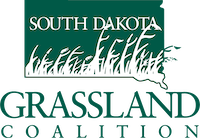Bale grazing builds soil health while easing the work of feeding cattle in the winter. Dennis Hoyle (Roscoe, SD), Dallas Anderson (Eureka, SD), and Doug Sieck (Selby, SD) shared their experiences. Sieck was skeptical to begin with. He started out small 10 years ago and now bale grazing is a regular part of his winter feeding program. He sets up a checkerboard with poly wire in the area to be grazed and puts out about five days’ worth of bales in each “square” (see photo). Dallas Anderson has bale-grazed crop land and hay ground. He sectioned off areas with a poly wire that held enough bales for about 5 days. Hoyle set bales in 10 rows of 14 each in a 15-acre corner of an old CRP field and sectioned the row to be grazed off with poly wire.

